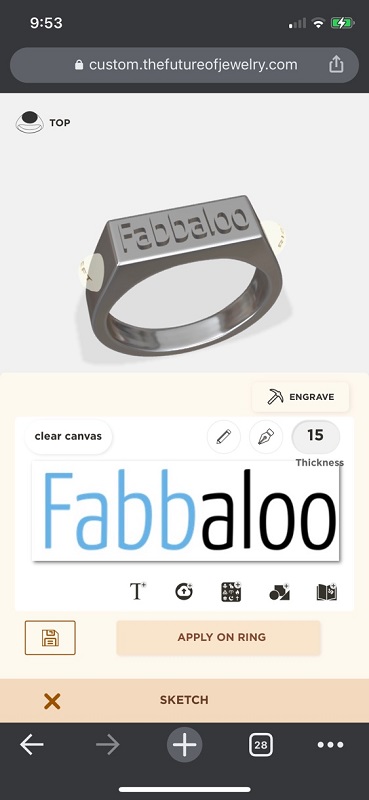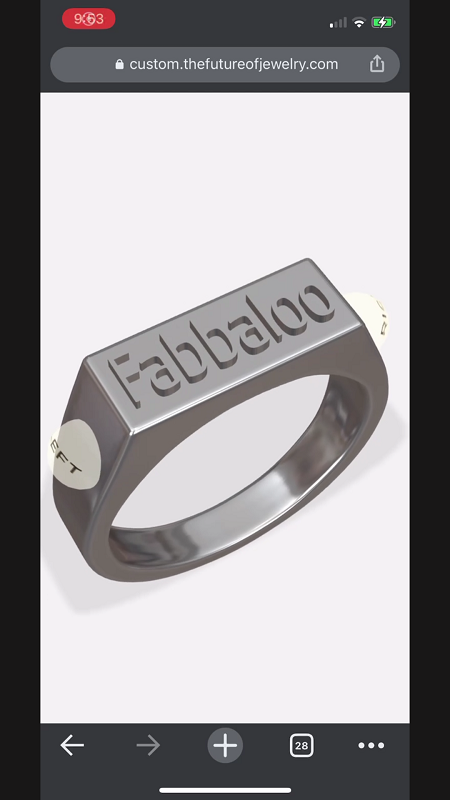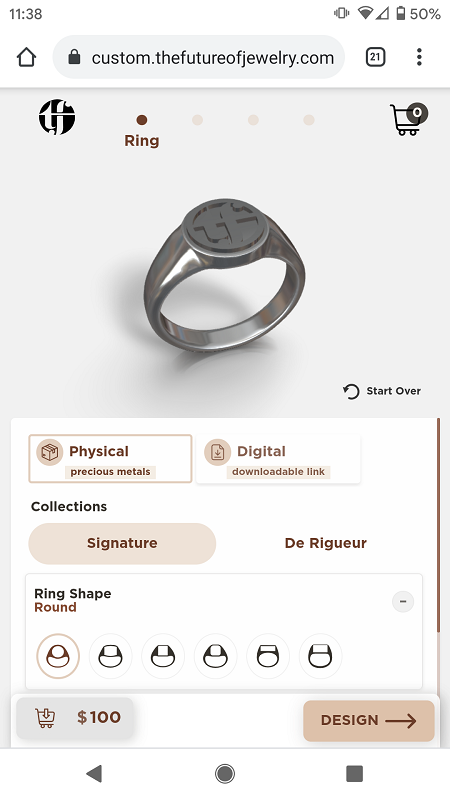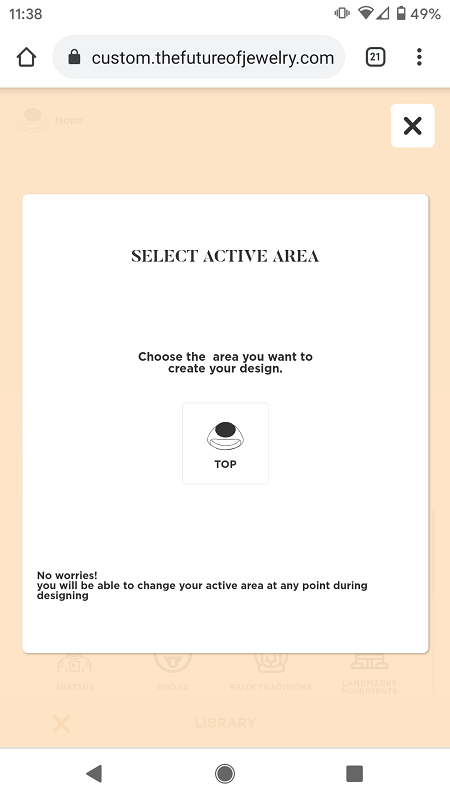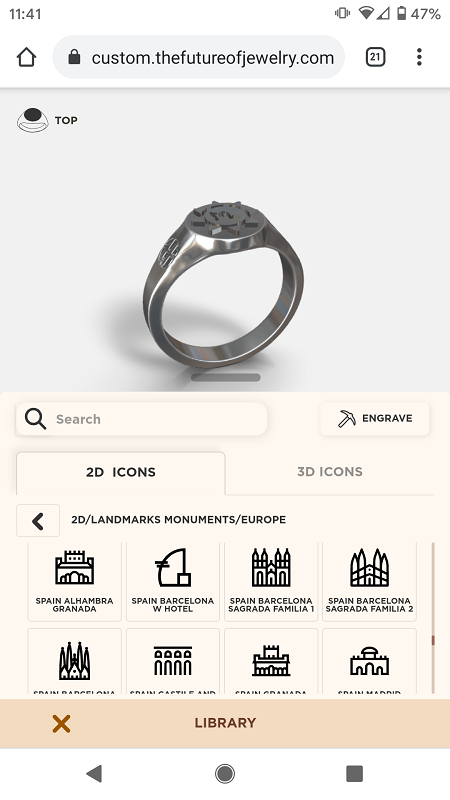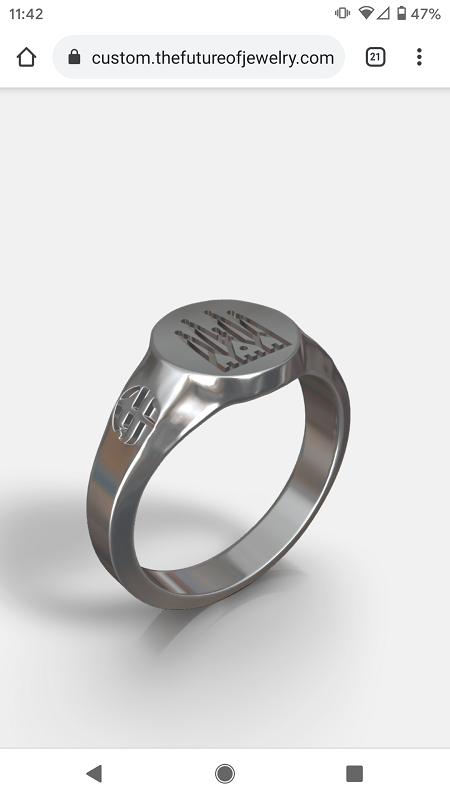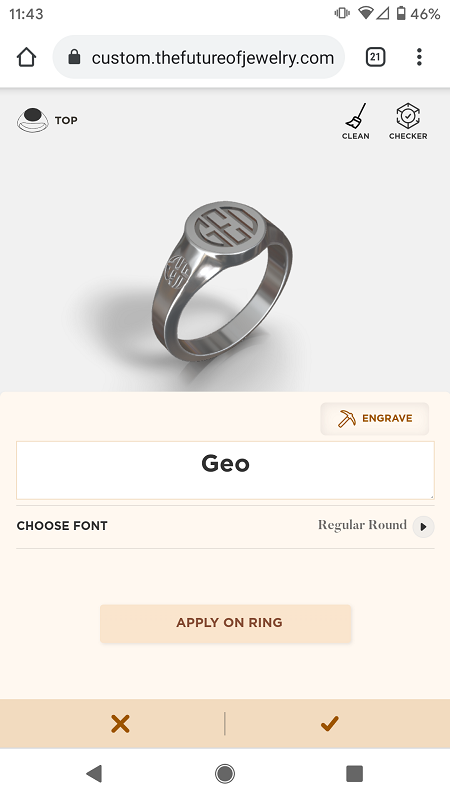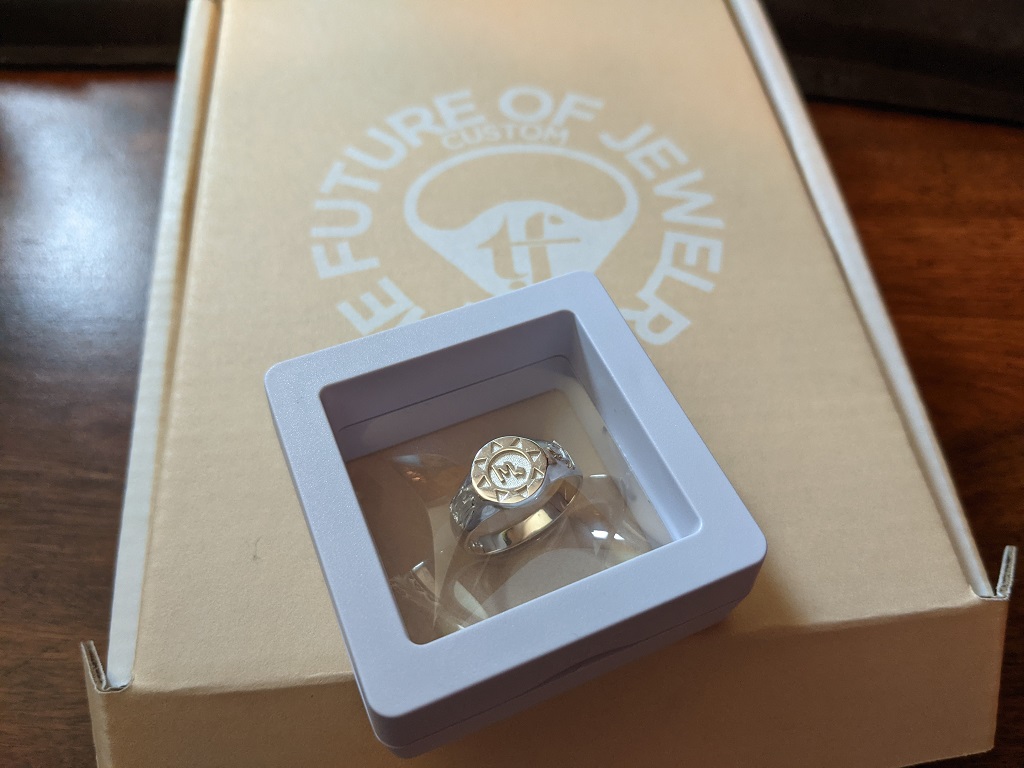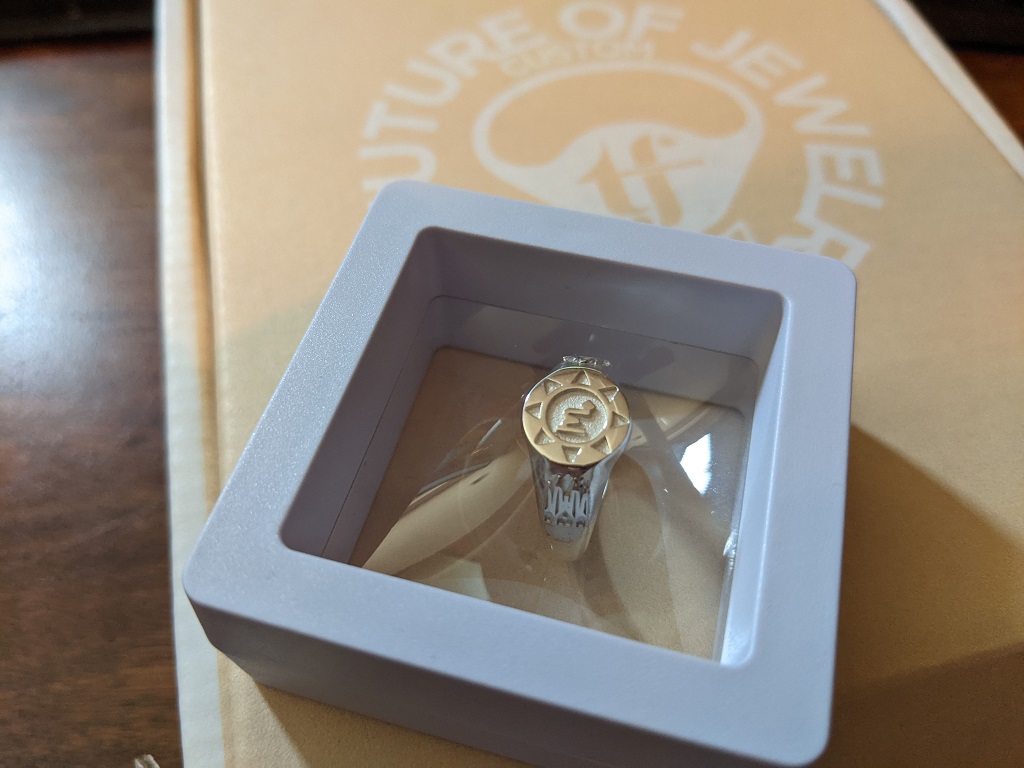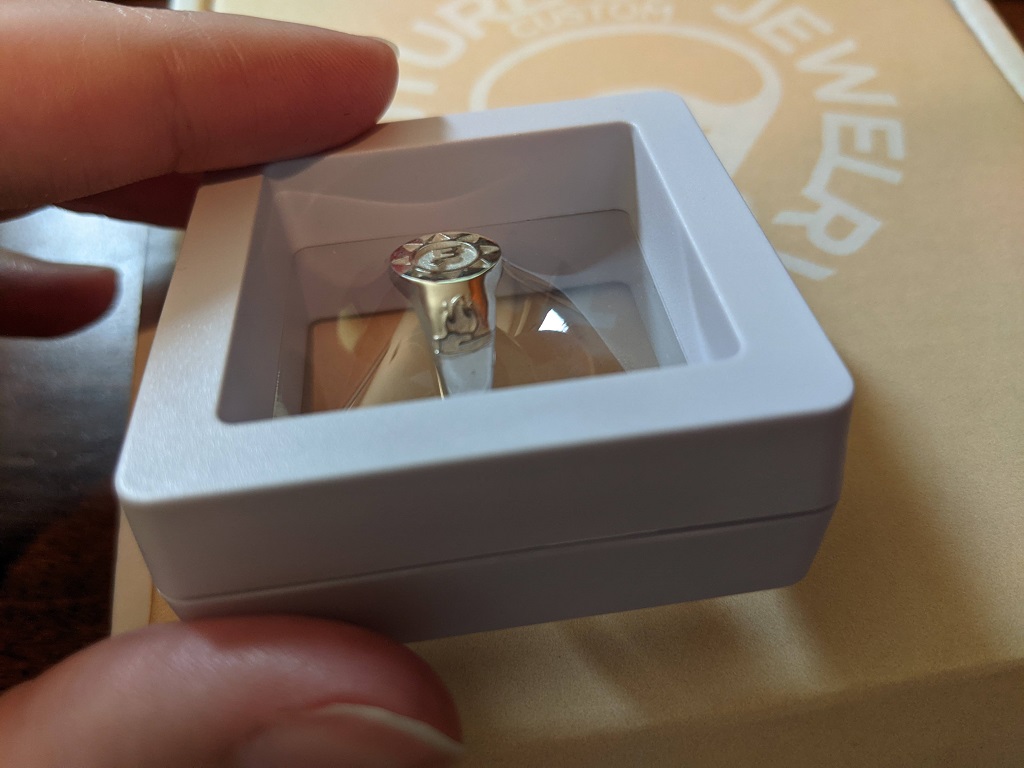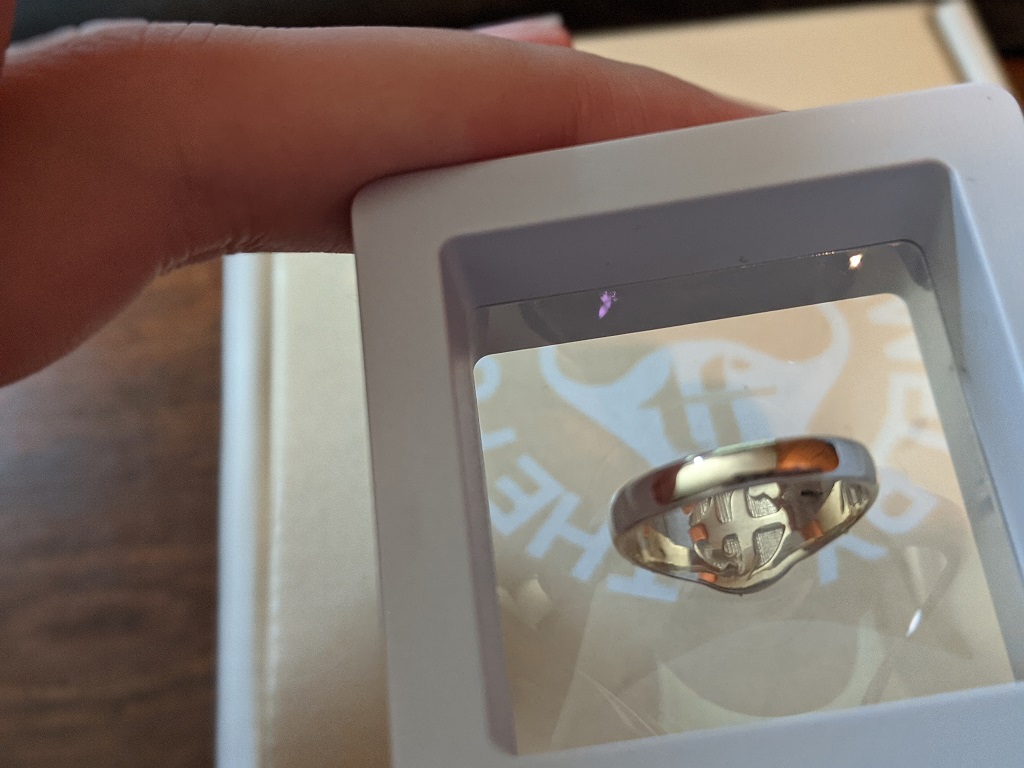
I recently customized a signet ring brought to life via web app and 3D printing.
Most of our reviews are hands-on; this one is technically on-hand as I wear my beautiful new ring.
3D Printed Jewelry
Jewelry is a very popular application for 3D printing. Of course, most 3D printed jewelry isn’t itself 3D printed; while some lovely plastic designs are around and there certainly is some directly 3D printed metal jewelry out there, by far the most popular (and cost-effective) way to use 3D printing here is to make a detailed resin mold. This then is used for the lost wax casting method to create the final piece.
As an outside example, a local jeweler used this method when my husband ordered a custom wedding set for me after the birth of our son. My husband and the jeweler sat down together over a few consultations to develop this specific design using our three birthstones (mine September’s sapphire, and my husband and son both November’s topaz). The jeweler graciously gave us the resin prints of my rings:
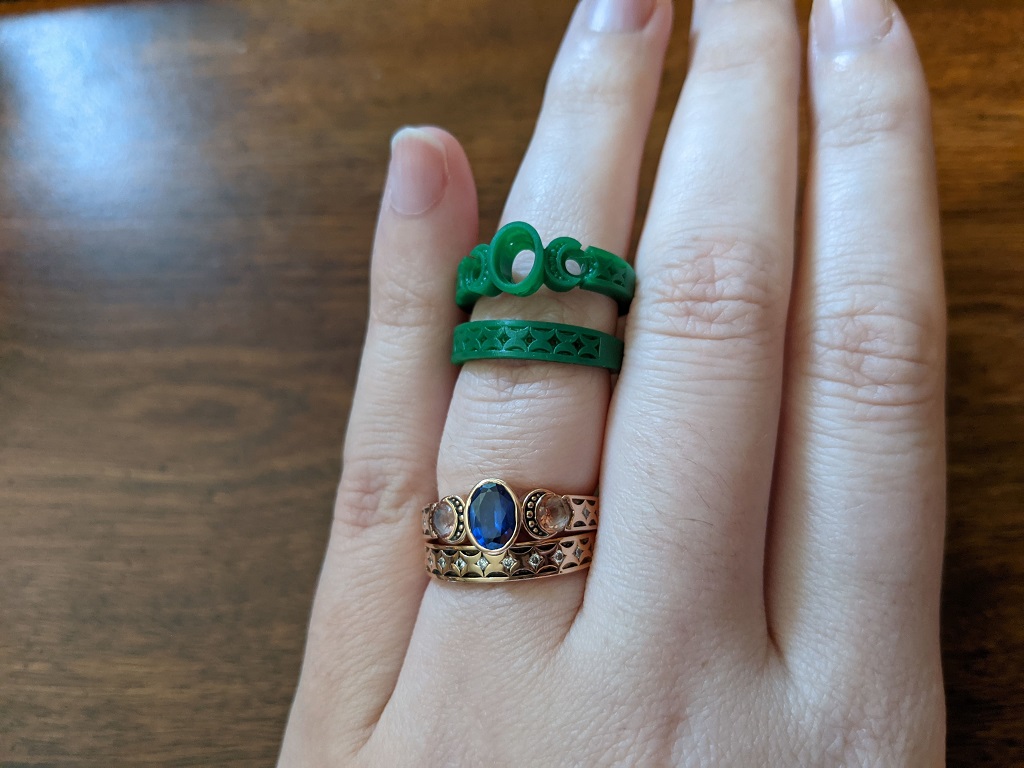
But what if the process could be even easier and more direct? More accessible, intuitive interfaces can bring design straight to the consumer. In the world of “there’s an app for that”, it’s very helpful when there’s an app for that.
Is this, perhaps, the very future of jewelry? The Melvin sisters think so.
THEFUTUREOFJEWELRY
In 2017, sisters Casey and Janine “Nina” Melvin founded THEFUTUREOFJEWELRY (TFOJ). As with so many startups, the idea came from personal experience. They explain:
“One weekend on the Spanish island of Palma, the sisters entered a family-owned jewelry store and began looking through the glass cases of pieces. Janine had spotted a simple 14K yellow gold signet ring first and asked the owner to retrieve it from the case. He let us know it was the last one in stock and that he would personally etch initials on the face. When she slipped the ring on her finger, it was clear it was far too large for even her middle finger. Casey tried it on next, and it fit her right ring finger perfectly.
Casey made a deal with her sister–she would find a similar signet ring online and would have it engraved. The two agreed they would probably have an easier time online finding a ring in Janine’s small size. They were wrong.
They were shocked at the lack of options for affordable customizable pieces available for sale online.
They realized there was a void in the market– one that existed due to the human labor cost necessary to create custom jewelry pieces in the past. With the progress in technology made in recent years, they believed the customization process could be automated through software development…and so THEFUTUREOFJEWELRY was born.”
TFOJ Process
So how does one now get exactly the signet ring they want? It’s a pretty quick straightforward:
- Select ring type
- Customize the design
- Order either a 3D file or a physical ring in your choice of material
Ring type can be from the “Signature” or “De Rigeur” collections, with solid or split shank sides leading to the round/square/rectangular/bubble-ish signet-style center.
You can either select from TFOJ library or upload a custom image — think a company logo, hand-drawn initials, or similar relatively small/simple imagery. Casey had sent me a preview of what a Fabbaloo ring might look like, down to our font:
Pricing is transparent at every step. The price is based on your selection of material (e.g., 14K gold is pricier than sterling silver), size, and design (i.e., more complex designs cost more). Every tweak to the design or material selection adjusts the clearly-visible final price: no surprises here.
It all sounds easy enough… and, as it turns out: it is!
TFOJ Experience
The biggest issue I had in trying out the process at TFOJ was in realizing it works way, way better on my smartphone than on my computer. Once on my phone, I was very easily able to navigate the design process.
To match more of my personal, rather than business, aesthetic, I opted for the image library route for my own design.
I spent the better part of an hour playing around with different designs and placements. It could easily have been a much speedier process, but what did I want in the center? Initials in the classic signet ring styling? Whose? Mine, maybe my son’s out of sentiment? Or maybe a business logo, or something with personal meaning.
Having decided early on I wanted solid sides — because this would also offer two additional placements for design aspects — I then had to consider what I wanted on the sides.
Each design placement was pretty quick, and I could then turn the ring rendering around to see how they all played together.
The eventual aesthetic I settled on was one symbolic of my usual (well, at least in the Before Times) work/life balance. Inspired as well by the custom wedding set I wear daily on my left hand, I decided to incorporate my family into the new right hand ring.
I placed the Scorpio sun sign (both my husband and my son’s zodiac sign) in the center — this was also idiot-proof, as rather than simply select “Scorpio” I entered my son’s exact date, time, and city of birth to confirm his sign. This is also helpful for me, as my own birthday is on the cusp between Virgo and Libra, so it would have been nice to have the guaranteed zodiac decision maker going with the “correct” Libra symbol.
On the left side, I placed Barcelona’s iconic Sagrada Família, selecting my favorite of three styles of the building. Why Sagrada Família? Every year since HP’s initial MJF launch in 2016 I’ve ended up in this gorgeous city at least once or twice in the name of work, and it’s become my favorite work destination. Gosh, I miss Barcelona; hopefully 2022.
On the right side, I ran into some difficulty. I started playing with the “avatar” designs in TFOJ’s library, as there was a little female writer figure I liked as being a direct “me” on my design. It was, alas, too complex to be a side design and I didn’t want that one being my centerpiece. I settled on one from the Greek mythology collection: Hestia’s hearth. If one side of the ring was travel, the other should be home.
I was delighted with the design then, as it was for me the perfect work/travel/home trifecta and could prove a good sentimental piece when I eventually hit the road again. I selected my ring size, confirmed my sterling silver material selection, and hit order.
But how would it actually translate to the physical?
I placed my order on 6 April and it arrived exactly three weeks later on 27 April. It’s exactly as promised. The fit is true to size, the design looks just like the rendering, and all told I couldn’t be happier with it.
The Melvin sisters’ founding story also mentions that a difficulty-turned-inspiration was finding a signet ring for Nina’s smaller finger size. While I wear a pretty standard size 7, I do have to say I love that my signet ring is appropriately sized for my preference in more “dainty/feminine” rings. Many signet rings are made for men’s hand sizes and generally larger-sized design preferences, and I appreciate that this feels especially “for me” as a somewhat smaller piece. There are of course many more style options for those who prefer larger or more uniquely-shaped rings, as well.
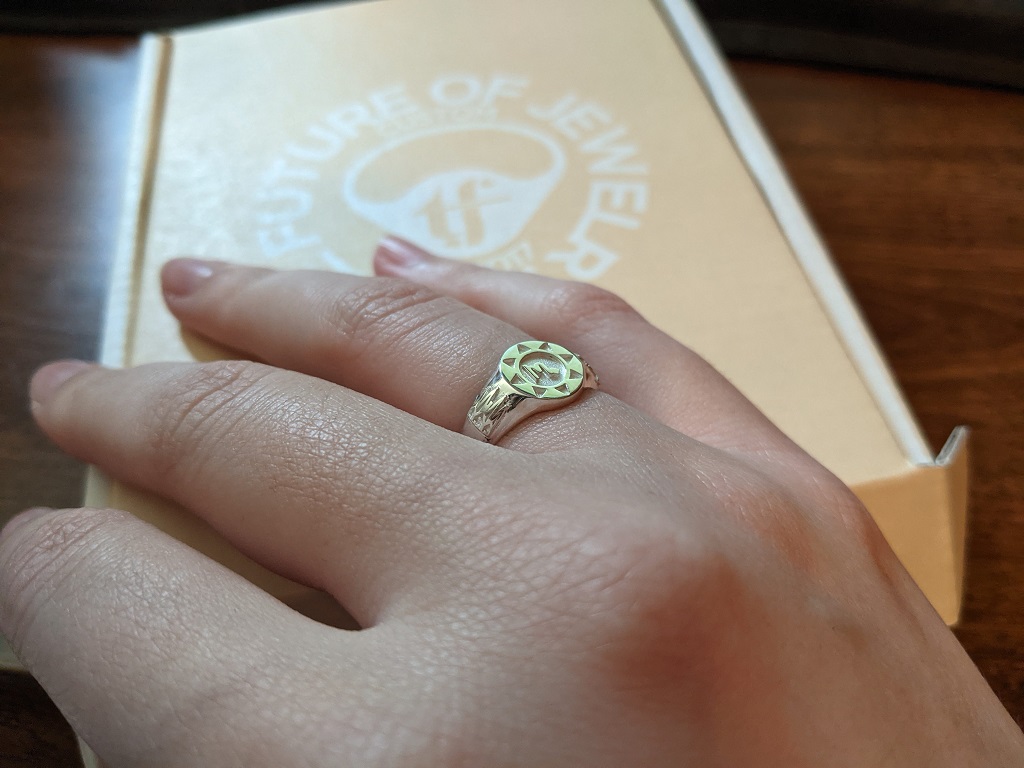
For the designs, material, and sizing selections I made, my ring design was priced at $143. I’ve paid more than that for most decent jewelry pieces in my personal collection, and it’s certainly the most reasonable price I’ve seen for a totally custom piece.
My overall verdict? Love TFOJ’s vision, process, and experience. This will probably not be the only piece of jewelry I ever order from this company; I see more of THEFUTUREOFJEWELRY in the future of my jewelry collection.

